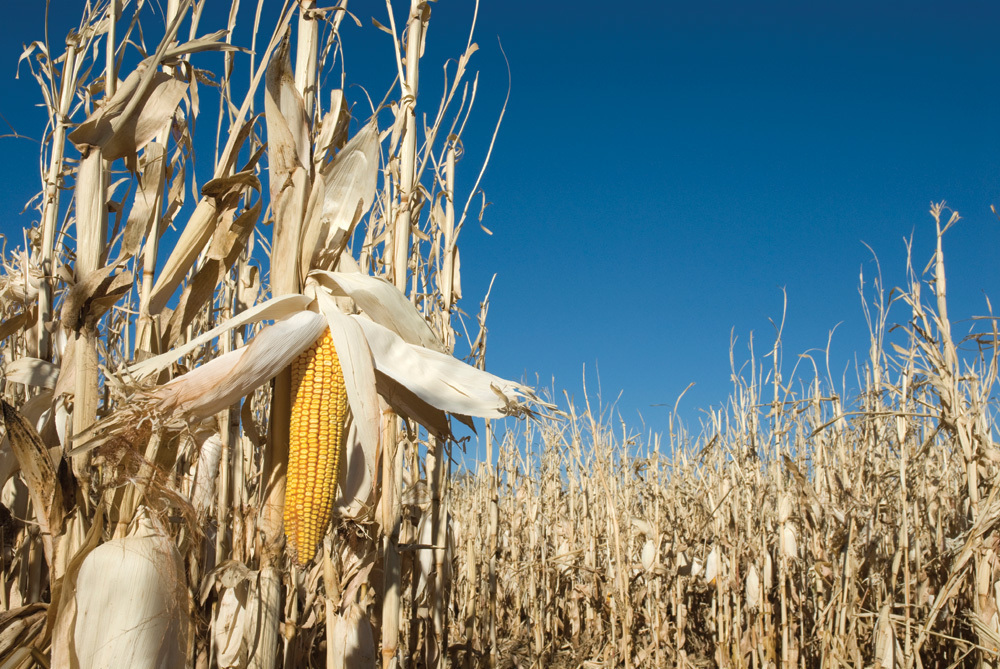Farmland preservation grants available – Journal-Patriot

North Carolina Farmland Preservation Grant Program: A Commitment to Sustainable Development
Program Overview and Alignment with Global Goals
The State of North Carolina has initiated a grant funding cycle, commencing August 1, through the N.C. Agricultural Development and Farmland Preservation Trust Fund. This program invites county governments and conservation nonprofit organizations to apply for funding for projects aimed at farmland preservation. The initiative directly supports the state’s commitment to the United Nations Sustainable Development Goals (SDGs) by ensuring the long-term viability of its agricultural and forest lands.
As noted by N.C. Agriculture Commissioner Steve Troxler, the high demand for farmland preservation underscores the critical role of such programs. The grants provide a significant opportunity for landowners to secure the future of their farms, ensuring they remain in production for subsequent generations and contributing to a sustainable future.
Grant Objectives and Contribution to Sustainable Development Goals
The grant program is structured to address several key areas, each aligning with specific SDGs:
- Agricultural Conservation Easements: By funding easements on working farms and forests, the program directly supports SDG 2 (Zero Hunger) by securing land for future food production and SDG 15 (Life on Land) by protecting vital ecosystems, preventing land degradation, and preserving biodiversity.
- Sustainable Enterprise Programs: Grants are available to support public-private partnerships that promote profitable and sustainable agricultural, horticultural, and forestland activities. This objective advances SDG 8 (Decent Work and Economic Growth) by strengthening rural economies and SDG 12 (Responsible Consumption and Production) by encouraging sustainable production patterns.
- Strategic Agricultural Planning: Funding for the development of agricultural plans and the creation of Agricultural Growth Zones contributes to SDG 11 (Sustainable Cities and Communities). These efforts facilitate organized rural development, curb urban sprawl, and enhance local investments in food system resilience.
Application and Procedural Framework
A new application format has been implemented for the current funding cycle. All prospective applicants must adhere to the following timeline:
- Intent to Apply: All interested applicants are required to complete the “Intent to Apply” section by August 29. This is a mandatory prerequisite for eligibility.
- Full Application Submission: Following the submission of intent, applicants may complete the full application.
- Application Deadline: The final deadline for all application submissions is December 22.
Stakeholder Collaboration and Economic Incentives
Successful implementation of this program relies on collaboration between landowners and public or non-profit entities. Landowners interested in preserving their farms must partner with their respective county governments or with land trusts to apply for grant funds. If an application requesting funds for the purchase value of a conservation easement is awarded, landowners receive financial compensation for the sale of their property’s development rights. This mechanism provides a direct economic incentive that supports the financial stability of farming families (SDG 8) while achieving critical conservation and food security objectives (SDG 2).
Access to Information
Complete grant applications, detailed rules, and informational materials are available for review online at https://www.ncagr.gov/divisions/farmland-preservation/applicants. For additional inquiries, the Farmland Preservation office can be contacted at 919-707-3074.
SDGs, Targets, and Indicators Analysis
1. Which SDGs are addressed or connected to the issues highlighted in the article?
- SDG 2: Zero Hunger
- SDG 15: Life on Land
- SDG 17: Partnerships for the Goals
2. What specific targets under those SDGs can be identified based on the article’s content?
-
SDG 2: Zero Hunger
- Target 2.4: By 2030, ensure sustainable food production systems and implement resilient agricultural practices that increase productivity and production, that help maintain ecosystems, that strengthen capacity for adaptation to climate change, extreme weather, drought, flooding and other disasters and that progressively improve land and soil quality.
Explanation: The article focuses on the “N.C. Agricultural Development and Farmland Preservation Trust Fund,” which aims to keep farms “in production for generations to come.” The grants support “profitable and sustainable agricultural, horticultural and forestland activities,” directly contributing to sustainable food production systems.
- Target 2.4: By 2030, ensure sustainable food production systems and implement resilient agricultural practices that increase productivity and production, that help maintain ecosystems, that strengthen capacity for adaptation to climate change, extreme weather, drought, flooding and other disasters and that progressively improve land and soil quality.
-
SDG 15: Life on Land
- Target 15.1: By 2020, ensure the conservation, restoration and sustainable use of terrestrial and inland freshwater ecosystems and their services, in particular forests, wetlands, mountains and drylands, in line with obligations under international agreements.
Explanation: The grants are available for “agricultural conservation easements on working farms and forests.” This initiative directly promotes the conservation and sustainable use of terrestrial ecosystems by preventing the development of farmland and forestland. - Target 15.9: By 2020, integrate ecosystem and biodiversity values into national and local planning, development processes, poverty reduction strategies and accounts.
Explanation: The program supports the development of “agricultural plans” and the creation of “Agricultural Growth Zones.” These actions represent the integration of ecosystem values (farmland preservation) into local government planning and development processes.
- Target 15.1: By 2020, ensure the conservation, restoration and sustainable use of terrestrial and inland freshwater ecosystems and their services, in particular forests, wetlands, mountains and drylands, in line with obligations under international agreements.
-
SDG 17: Partnerships for the Goals
- Target 17.17: Encourage and promote effective public, public-private and civil society partnerships, building on the experience and resourcing strategies of partnerships.
Explanation: The entire grant application process described is a partnership model. The article states that “county governments and conservation nonprofit groups may apply” and that “Landowners interested in preserving their farms… must work with county governments or land trusts to apply for grant funds.” This illustrates a public-private-civil society partnership to achieve conservation goals.
- Target 17.17: Encourage and promote effective public, public-private and civil society partnerships, building on the experience and resourcing strategies of partnerships.
3. Are there any indicators mentioned or implied in the article that can be used to measure progress towards the identified targets?
-
Target 2.4 & 15.1
- Indicator (Implied): Amount of land (acreage) preserved through agricultural conservation easements.
Explanation: The primary goal is “farmland preservation.” Measuring the acreage of farms and forests protected by these easements would be a direct indicator of progress. The article mentions landowners will be “compensated for the purchase of the development rights,” which results in preserved land. - Indicator (Implied): Amount of grant funding awarded for farmland preservation projects.
Explanation: The article is an announcement for grant funding from the “N.C. Agricultural Development and Farmland Preservation Trust Fund.” Tracking the total funds disbursed is a key metric for the scale of the preservation effort.
- Indicator (Implied): Amount of land (acreage) preserved through agricultural conservation easements.
-
Target 15.9
- Indicator (Implied): Number of agricultural plans developed with grant support.
Explanation: The article explicitly states that grants are available “to develop agricultural plans,” making the number of such plans a direct measure of this activity. - Indicator (Implied): Number of Agricultural Growth Zones created.
Explanation: The article mentions that funds can be used “to create Agricultural Growth Zones,” so counting the number of zones established would be a direct indicator of progress.
- Indicator (Implied): Number of agricultural plans developed with grant support.
-
Target 17.17
- Indicator (Implied): Number of applications submitted by partnerships of county governments, land trusts, and landowners.
Explanation: The article highlights that landowners must work with “county governments or land trusts to apply.” The number of applications, especially the statement that “demand for farmland preservation is at an all-time high,” serves as an indicator of the level of partnership and engagement.
- Indicator (Implied): Number of applications submitted by partnerships of county governments, land trusts, and landowners.
4. Table of SDGs, Targets, and Indicators
| SDGs | Targets | Indicators (Implied from Article) |
|---|---|---|
| SDG 2: Zero Hunger | 2.4: Ensure sustainable food production systems and implement resilient agricultural practices. |
|
| SDG 15: Life on Land | 15.1: Ensure the conservation and sustainable use of terrestrial ecosystems.
15.9: Integrate ecosystem values into national and local planning. |
|
| SDG 17: Partnerships for the Goals | 17.17: Encourage and promote effective public, public-private and civil society partnerships. |
|
Source: journalpatriot.com

What is Your Reaction?
 Like
0
Like
0
 Dislike
0
Dislike
0
 Love
0
Love
0
 Funny
0
Funny
0
 Angry
0
Angry
0
 Sad
0
Sad
0
 Wow
0
Wow
0














































































